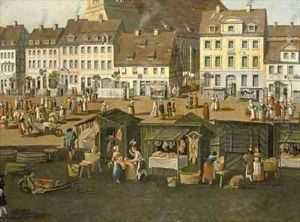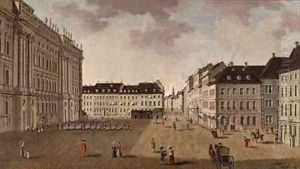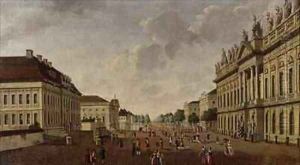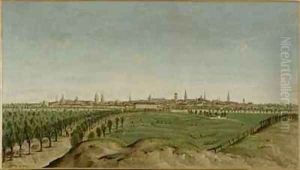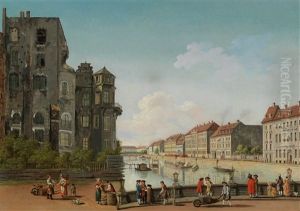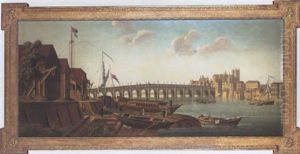Carl Traugott Fechhelm Paintings
Carl Traugott Fechhelm was a German artist born in the year 1763, in a period characterized by the Enlightenment and the early stages of the Romantic movement. His life and career were situated in a time of significant social, political, and artistic shifts in Europe. Fechhelm is often remembered for his contributions to the world of printmaking and engraving, a craft that was highly regarded during his lifetime for its ability to reproduce and disseminate artworks, thus playing a crucial role in the cultural exchange of the era.
Fechhelm's artistic journey began in the traditional apprenticeship system, which was prevalent in the 18th century. This system allowed young artists to learn their craft under the guidance of established masters, thereby ensuring the transmission of skills and knowledge. Throughout his career, Fechhelm developed a distinctive style that reflected the intricacies and depth of engraving as a medium. His works are noted for their detailed execution and the ability to capture the essence of the subjects he portrayed, ranging from portraiture to scenes of daily life, as well as interpretations of works by other artists.
Despite the limited documentation on Fechhelm's life, it is known that he worked at a time when Europe was undergoing dramatic changes, including the French Revolution and the Napoleonic Wars. These events not only shaped the political landscape but also had a profound impact on the arts. Artists of Fechhelm's era were increasingly drawn to themes of liberty, nature, and human emotion, which paralleled the Romantic movement's rise. Although Fechhelm's work is primarily remembered within the context of engraving, his contributions to the art world also reflect the broader trends of his time, showcasing the shift from neoclassical ideals to a more expressive and individualistic approach.
Carl Traugott Fechhelm passed away in 1815, at the end of the Napoleonic Wars, leaving behind a body of work that continues to be studied for its technical prowess and historical significance. His engravings serve as a window into the cultural and artistic milieu of late 18th and early 19th century Europe, offering insights into the period's aesthetic preferences and the evolving role of the artist in society. Through his meticulous craftsmanship and attention to detail, Fechhelm contributed to the preservation and propagation of artistic heritage, thereby securing his place in the annals of art history.
